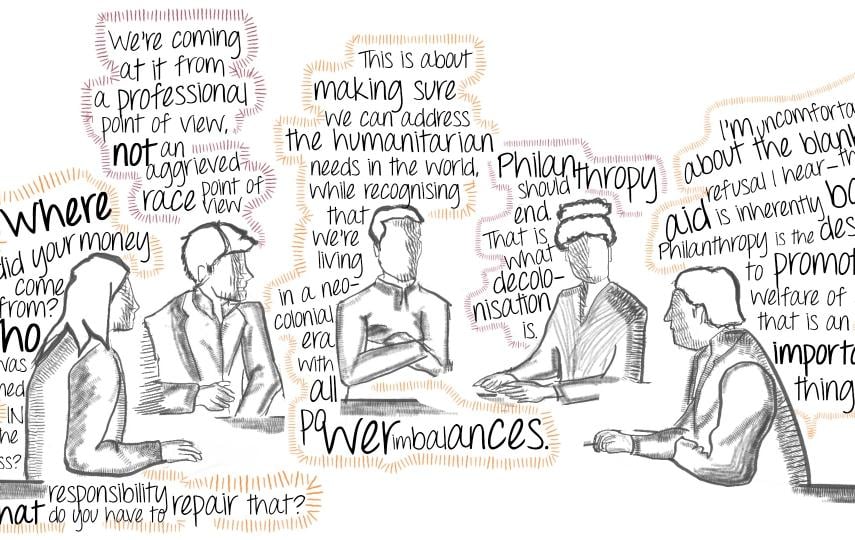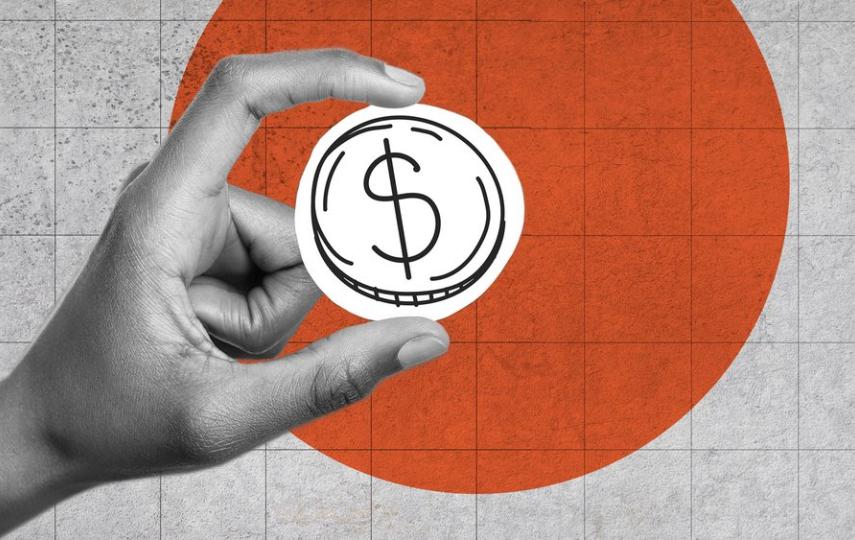Long-promised reforms are coming too slowly to a humanitarian sector that’s struggling to keep pace with soaring needs and costs, a new analysis warns.
The State of the Humanitarian System report is the latest to measure progress and setbacks across the global emergency aid sector. Its release comes as world leaders prepare for high-level meetings at the UN General Assembly next week – a summit where humanitarian crises are a key part of a crowded political agenda.
The report, a deep dive into how the humanitarian sector has evolved that is published every three years, fleshes out broader trends with hard figures and interviews with aid workers, analysts, and people who use aid.
Relief reaches less than half the people targeted, even though humanitarian funding nearly doubled over the last decade, to more than $31.3 billion last year.
Only a minority of people who use aid reported that it met their needs – and this proportion is falling.
And as crises grow entrenched, more people are becoming dependent: Seven of the largest UN-backed emergency responses were in countries that have seen annual appeals for more than a decade, the report notes.
Yet for the first time in 15 years of evaluating the state of the humanitarian system, there has been “no significant improvement” in key areas like efficiency and effectiveness, said the report’s authors, the UK-based research and learning network, ALNAP.
This is partly due to the extreme scale of humanitarian needs fuelled by conflict, COVID-19, and the climate crisis. But the sector is still “highly resistant to change”, as seen by years of unfulfilled pledges to make aid more local, accountable, or collaborative.
“As the world around it changes more rapidly, there are questions as to whether it can keep up,” the authors said.
This underscores the need for significant shifts to how international emergency aid is funded, planned, and delivered, several humanitarian networks said in a statement responding to the report: “The system needs transformation, not tinkering at the edges – and this will only happen if there is adequate investment in different and better ways of working.”
Here are a few takeaways from the latest assessment of the international humanitarian system:
When the pressure rises, humanitarians keep quiet
Aid access is growing more complex in conflicts, and humanitarians are often choosing to stay silent to maintain what they have.
“Fear of expulsion had a chilling effect on the sector’s collective willingness to speak out about abuses of civilians and blocks on aid,” the report said.
In several emergency responses – including Syria, Yemen, Somalia, Afghanistan, and Mozambique – aid workers reported that authorities at different levels were vetting recipient lists.
In some countries, some aid workers feared expulsion if their agencies spoke out against rights abuses. “They specialise in scaring us, and we specialise in being scared,” one humanitarian official told researchers.
This silence, in turn, can spark criticism that humanitarians are using neutrality as “a cover” for not speaking up – such as in Venezuela, where authorities have arrested staff with local rights and humanitarian groups, or in post-coup Myanmar.
People who use aid are still waiting to be heard
How well does the humanitarian sector listen to people who rely on it?
Roughly a third of aid recipients surveyed reported that they could complain about services, that aid groups communicated well, or that aid met their most important needs.
In many cases, positive responses have flatlined or fallen since previous rounds of research – despite long-standing promises from the humanitarian sector to include crisis-hit communities in how aid is designed and delivered.
“There has not been a system-wide shift in how humanitarians engage with crisis-affected people or support their dignity,” the researchers said.
There’s also a gap between how humanitarian workers rate their efforts, and what aid recipients say.
According to ALNAP, 44 percent of surveyed staff gave their organisations positive ratings for being “accountable to affected populations”, as the one-time aid buzzword is known. But only a third of people who use aid said they were even consulted or contributed feedback.
Women are rising to leadership positions…
More women are reaching the top ranks of the international humanitarian system, the statistics suggest.
In one survey sample, women held nearly half the highest-paying jobs at UN agencies, and more than 60 percent at international NGOs. Women also comprised 44 percent of the governing boards of major INGOs.
… and national staff are not
Local staff are the vast majority of frontline workers in emergency responses: Some 93 percent of the humanitarian workforce are citizens of the countries in which they work.
But it’s a different picture when it comes to leadership in country capitals or at headquarters.
In one small survey, less than one fifth of country director jobs were held by citizens of that country. And a separate survey found that people from countries receiving aid comprised less than 20 percent of INGO boards. Only two percent had any experience living as a refugee or in a humanitarian crisis environment (“Even superficial representation is rare,” that study noted).
The wide pay gap between international and local aid groups is just as stark.
UN agencies and international NGO staff were paid more than six times the salary of people who worked for local and national NGOs, the researchers said. Local humanitarian groups say they often lose staff to big aid agencies, disrupting local economies and making it harder to survive over the long term.
The sector is still growing, even if money is stretched…
The humanitarian system is ballooning in cost, size, and scope, but funding is even more concentrated in the hands of a few donors, countries, and aid groups.
The number of aid groups has grown by about 10 percent over a decade: There are now some 5,000 humanitarian agencies, according to UK-based research outfit Humanitarian Outcomes.
And the aid sector now includes at least 630,000 staff – a 40-percent jump since 2013.
… but not all shortfalls are created equal…
Yes, the humanitarian donor financing system is overstretched and unsustainable. But it’s also heavily concentrated in a few responses and in a handful of aid agencies.
Some 40 percent of international humanitarian assistance last year went to responses in five countries: Afghanistan, Ethiopia, South Sudan, Syria, and Yemen.
If some crises saw big aid pledges, others were sidelined. A COVID-19 appeal for Nepal, for example, was only 9-percent funded – jeopardising programmes in the middle of a coronavirus wave that had already overwhelmed neighbouring India.
Meanwhile, half of international assistance went to just three UN agencies: the World Food Programme, the UN’s refugee agency, and UNICEF.
… and there’s no quick fix
Deep-pocketed multilateral banks, and others typically focused on longer-term development, aren’t riding to the rescue.
While the World Bank has stepped up support for crisis prevention and preparedness in recent years, it has no interest in replacing or transforming the humanitarian funding landscape, bank staff told researchers in interviews.
If there is a solution, then it may come from a combination of sources – including those outside the traditional humanitarian system and its stable of (mostly Western) donor governments.
International aid, the report notes, is just one way in which people in crises get help.
Survivor-led networks, direct diaspora aid, pop-up volunteer groups, faith groups, and the private sector already play sizeable roles – but they’re often discounted, undervalued, or simply ignored by traditional humanitarians.
“Focusing on the international humanitarian system to understand how people survive and recover from a crisis,” the researchers said, “is akin to viewing a large landscape through a pin-sized hole.”
Edited by Andrew Gully.








